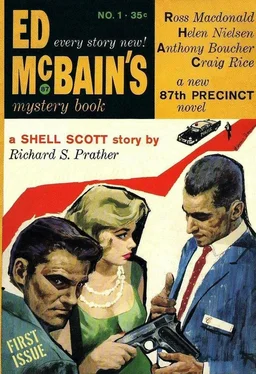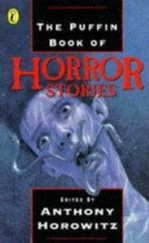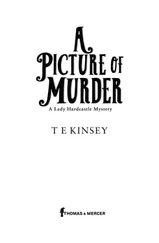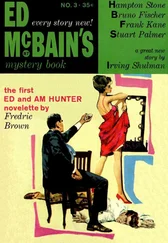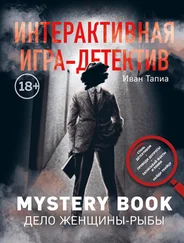Anthony Boucher - Ed McBain’s Mystery Book, No. 1, 1960
Здесь есть возможность читать онлайн «Anthony Boucher - Ed McBain’s Mystery Book, No. 1, 1960» весь текст электронной книги совершенно бесплатно (целиком полную версию без сокращений). В некоторых случаях можно слушать аудио, скачать через торрент в формате fb2 и присутствует краткое содержание. Город: New York, Год выпуска: 1960, Издательство: Pocket Books, Жанр: Детектив, на английском языке. Описание произведения, (предисловие) а так же отзывы посетителей доступны на портале библиотеки ЛибКат.
- Название:Ed McBain’s Mystery Book, No. 1, 1960
- Автор:
- Издательство:Pocket Books
- Жанр:
- Год:1960
- Город:New York
- ISBN:нет данных
- Рейтинг книги:5 / 5. Голосов: 1
-
Избранное:Добавить в избранное
- Отзывы:
-
Ваша оценка:
- 100
- 1
- 2
- 3
- 4
- 5
Ed McBain’s Mystery Book, No. 1, 1960: краткое содержание, описание и аннотация
Предлагаем к чтению аннотацию, описание, краткое содержание или предисловие (зависит от того, что написал сам автор книги «Ed McBain’s Mystery Book, No. 1, 1960»). Если вы не нашли необходимую информацию о книге — напишите в комментариях, мы постараемся отыскать её.
Ed McBain’s Mystery Book, No. 1, 1960 — читать онлайн бесплатно полную книгу (весь текст) целиком
Ниже представлен текст книги, разбитый по страницам. Система сохранения места последней прочитанной страницы, позволяет с удобством читать онлайн бесплатно книгу «Ed McBain’s Mystery Book, No. 1, 1960», без необходимости каждый раз заново искать на чём Вы остановились. Поставьте закладку, и сможете в любой момент перейти на страницу, на которой закончили чтение.
Интервал:
Закладка:
“I believe they were both insured for twelve thousand five hundred. Just a moment; let me check. Yes, that’s right.”
“And Miss Davis applied for payment on the policy after her cousin died, huh?”
“Yes. Here it is, right here. Josephine Thompson drowned at Lake Triangle on June fourth. That’s right. Claudia Davis sent in the policy and the certificate of death and also a coroner’s jury verdict.”
“She didn’t miss a trick, did she?”
“Sir? I’m sorry, I...”
“Did you pay her?”
“Yes. It was a perfectly legitimate claim. We began processing it at once.”
“Did you send anyone up to Lake Triangle to investigate the circumstances of Miss Thompson’s death?”
“Yes, but it was merely a routine investigation. A coroner’s inquest is good enough for us, Detective Carella.”
“When did you pay Miss Davis?”
“On July first.”
“You sent her a check for twelve thousand five hundred dollars, is that right?”
“No, sir.”
“Didn’t you say...?”
“The policy insured her for twelve-five, that’s correct. But there was a double-indemnity clause, you see, and Josephine Thompson’s death was accidental. No, we had to pay the policy’s limit, Detective Carella. On July first we sent Claudia Davis a check for twenty-five thousand dollars.”
9
There are no mysteries in police work.
Nothing fits into a carefully preconceived scheme. The high point of any given case is very often the corpse that opens the case. There is no climactic progression; suspense is for the movies. There are only people and curiously twisted motives, and small unexplained details, and coincidence, and the unexpected, and they combine to form a sequence of events, but there is no real mystery, there never is. There is only life, and sometimes death, and neither follows a rule book. Policemen hate mystery stories because they recognize in them a control that is lacking in their own very real, sometimes routine, sometimes spectacular, sometimes tedious investigation of a case. It is very nice and very clever and very convenient to have all the pieces fit together neatly. It is very kind to think of detectives as master mathematicians working on an algebraic problem whose constants are death and a victim, whose unknown is a murderer. But many of these mastermind detectives have trouble adding up the deductions on their twice-monthly paychecks. The world is full of wizards, for sure, but hardly any of them work for the city police.
There was one big mathematical discrepancy in the Claudia Davis case.
There seemed to be $5,000 unaccounted for.
Twenty-five grand had been mailed to Claudia Davis on July 1, and she presumably received the check after the Fourth of July holiday, cashed it someplace, and then took her money to the Seaboard Bank of America, opened a new checking account, and rented a safety-deposit box. But her total deposit at Seaboard had been $20,000 whereas the check had been for $25,000, so where was the laggard $5,000? And who had cashed the check for her? Mr. Dodd of the Security Insurance Corporation, Inc., explained the company’s rather complicated accounting system to Carella. A check was kept in the local office for several days after it was cashed in order to close out the policy, after which it was sent to the main office in Chicago where it sometimes stayed for several weeks until the master files were closed out. It was then sent to the company’s accounting and auditing firm in San Francisco. It was Dodd’s guess that the canceled check had already been sent to the California accountants, and he promised to put a tracer on it at once. Carella asked him to please hurry. Someone had cashed that check for Claudia and, supposedly, someone also had one-fifth of the check’s face value.
The very fact that Claudia had not taken the check itself to Seaboard seemed to indicate that she had something to hide. Presumably, she did not want anyone asking questions about insurance company checks, or insurance policies, or double indemnities, or accidental drownings, or especially her cousin Josie. The check was a perfectly good one, and yet she had chosen to cash it before opening a new account. Why? And why, for that matter, had she bothered opening a new account when she had a rather well-stuffed and active account at another bank?
There are only whys in police work, but they do not add up to mystery. They add up to work, and nobody in the world likes work. The bulls of the 87th would have preferred to sit on their backsides and sip at gin and tonics, but the whys were there, so they put on their hats and their holsters and tried to find some becauses.
Cotton Hawes systematically interrogated each and every tenant in the rooming house where Claudia Davis had been killed. They all had alibis tighter than the closed fist of an Arabian stable keeper. In his report to the lieutenant, Hawes expressed the belief that none of the tenants were guilty of homicide. As far as he was concerned, they were all clean.
Meyer Meyer attacked the 87th’s stool pigeons. There were money changers galore in the precinct and the city, men who turned hot loot into cold cash — for a price. If someone had cashed a $25,000 check for Claudia and kept $5,000 of it during the process, couldn’t that person conceivably be one of the money changers? He put the precinct stoolies on the ear, asked them to sound around the word of a Security Insurance Corporation check. The stoolies came up with nothing.
Detective Lieutenant Sam Grossman took his laboratory boys to the murder room and went over it again. And again. And again. He reported that the lock on the door was a snap lock, the kind that clicks shut automatically when the door is slammed. Whoever killed Claudia Davis could have done so without performing any locked-room gymnastics. All he had to do was close the door behind him when he left. Grossman also reported that Claudia’s bed had apparently not been slept in on the night of the murder. A pair of shoes had been found at the foot of a large easy chair in the bedroom and a novel was wedged open on the arm of the chair. He suggested that Claudia had fallen asleep while reading, had awakened, and gone into the other room where she had met her murderer and her death. He had no suggestions as to just who that murderer might have been.
Steve Carella was hot and impatient and overloaded. There were other things happening in the precinct, things like burglaries and muggings and knifings and assaults and kids with summertime on their hands hitting other kids with ball bats because they didn’t like the way they pronounced the word “ señor .” There were telephones jangling, and reports to be typed in triplicate, and people filing into the squadroom day and night with complaints against the citizenry of that fair city, and the Claudia Davis case was beginning to be a big fat pain in the keister. Carella wondered what it was like to be a shoemaker. And while he was wondering, he began to chase down the checks made out to George Badueck, David Oblinsky, and Martha Fedelson.
Happily, Bert Kling had nothing whatsoever to do with the Claudia Davis case. He hadn’t even discussed it with any of the men on the squad. He was a young detective and a new detective, and the things that happened in that precinct were enough to drive a guy nuts and keep him busy forty-eight hours every day, so he didn’t go around sticking his nose into other people’s cases. He had enough troubles of his own. One of those troubles was the lineup.
On Wednesday morning Bert Kling’s name appeared on the lineup duty chart.
10
The lineup was held in the gym downtown at Headquarters on High Street. It was held four days a week, Monday to Thursday, and the purpose of the parade was to acquaint the city’s detectives with the people who were committing crime, the premise being that crime is a repetitive profession and that a crook will always be a crook, and it’s good to know who your adversaries are should you happen to come face-to-face with them on the street. Timely recognition of a thief had helped crack many a case and had, on some occasions, even saved a detective’s life. So the lineup was a pretty valuable in-group custom. This didn’t mean that detectives enjoyed the trip downtown. They drew lineup perhaps once every two weeks and, often as not, lineup duty fell on their day off, and nobody appreciated rubbing elbows with criminals on his day off. The lineup that Wednesday morning followed the classic pattern of all lineups. The detectives sat in the gymnasium on folding chairs, and the chief of detectives sat behind a high podium at the back of the gym. The green shades were drawn, and the stage illuminated, and the offenders who’d been arrested the day before were marched before the assembled bulls while the chief read off the charges and handled the interrogation. The pattern was a simple one. The arresting officer, uniformed or plainclothes, would join the chief at the rear of the gym when his arrest came up. The chief would read off the felon’s name, and then the section of the city in which he’d been arrested, and then a number. He would say, for example, “Jones, John, Riverhead, three.” The “three” would simply indicate that this was the third arrest in Riverhead that day. Only felonies and special types of misdemeanors were handled at the lineup, so this narrowed the list of performers on any given day. Following the case number, the chief would read off the offense, and then say either “Statement” or “No statement,” telling the assembled cops that the thief either had or had not said anything when they’d put the collar on him. If there had been a statement, the chief would limit his questions to rather general topics since he didn’t want to lead the felon into saying anything that might contradict his usually incriminating initial statement, words that could be used against him in court. If there had been no statement, the chief would pull out all the stops. He was generally armed with whatever police records were available on the man who stood under the blinding lights, and it was the smart thief who understood the purpose of the lineup and who knew he was not bound to answer a goddamned thing they asked him. The chief of detectives was something like a deadly earnest Mike Wallace, but the stakes were slightly higher here because this involved something a little more important than a novelist plugging his new book or a senator explaining the stand he had taken on a farm bill. These were truly “interviews in depth,” and the booby prize was very often a long stretch up the river in a cozy one-windowed room.
Читать дальшеИнтервал:
Закладка:
Похожие книги на «Ed McBain’s Mystery Book, No. 1, 1960»
Представляем Вашему вниманию похожие книги на «Ed McBain’s Mystery Book, No. 1, 1960» списком для выбора. Мы отобрали схожую по названию и смыслу литературу в надежде предоставить читателям больше вариантов отыскать новые, интересные, ещё непрочитанные произведения.
Обсуждение, отзывы о книге «Ed McBain’s Mystery Book, No. 1, 1960» и просто собственные мнения читателей. Оставьте ваши комментарии, напишите, что Вы думаете о произведении, его смысле или главных героях. Укажите что конкретно понравилось, а что нет, и почему Вы так считаете.
